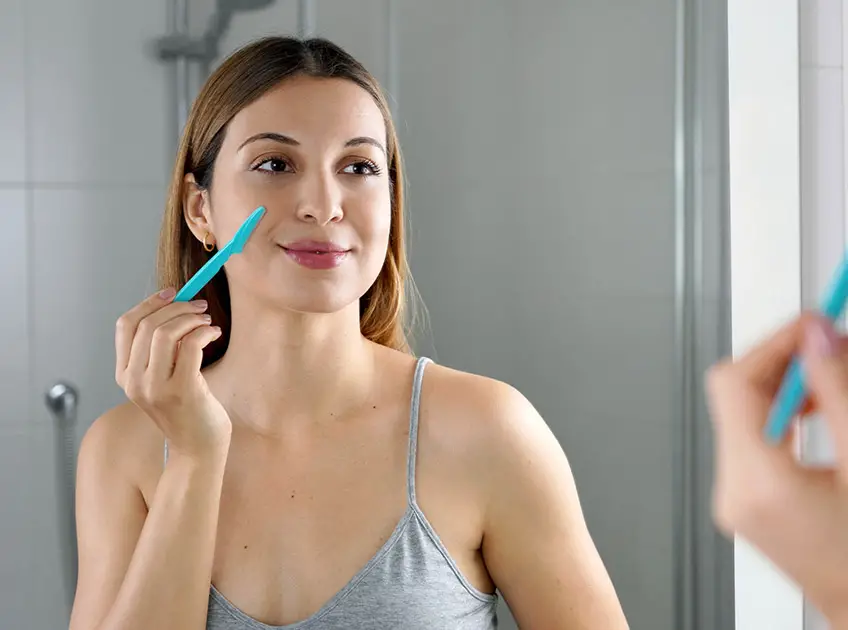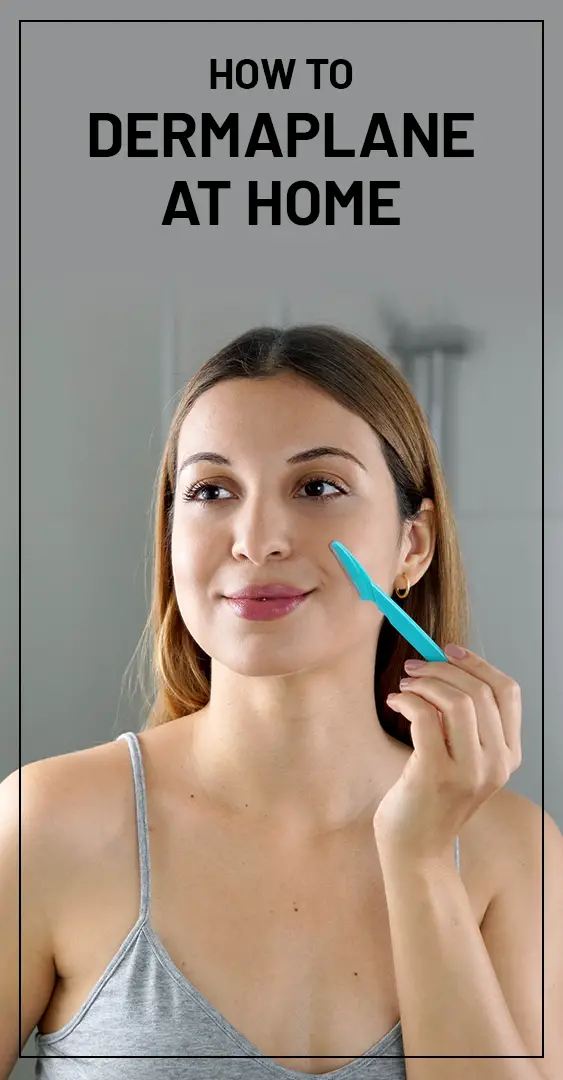
Dermaplaning is also known as dermablading and is a treatment for exfoliating the skin. A small scalpel is used for removing the skin’s top layer which is known as peach fuzz and removes the dead skin cells on the surface. It can be done near professionals or at home. Read on to know more.
What is Dermaplaning?
Dermaplaning is a skincare treatment that involves using a sharp blade to remove dead skin cells and vellus hair (peach fuzz) from the surface of the skin. This can leave the skin feeling smoother and looking brighter. Dermaplaning can be done at home with a dermaplaning tool or in a salon by a professional. When dermaplaning at home, it is important to use a sterile blade and to be very careful not to cut the skin. If you have sensitive skin, you may want to consult with a skincare professional before dermaplaning at home.
Dermaplaning Benefits
Some advantages of dermaplaning are as follows:
- It helps to get rid of the excess dead skin cells on the face.
- Facial skin becomes smooth and looks more even after the process.
- It helps in getting rid of unwanted facial hair.
- When the process is performed by a professional, the scarring can be significantly removed as the external surface layer is removed.
- Makeup application becomes easier since the skin is smoother than before.
How To Do Process Of Dermaplaning At Home
Here is the process you must follow for dermaplaning at home:
- Your skin must be clean before dermaplaning. So rinse thoroughly and pat it dry.
- Keep single-blade razors of small size ready for the process.
- The derma blade needs to be drawn on the damp skin for removing the fine hair and peach fuzz.
- Make sure to focus on the neck, upper lip, and jawline as peach fuzz is the thickest in these regions.
- Position the blade parallel to the skin and be gentle enough to avoid any cuts.
- Avoid dermaplaning over acne breakouts at points where the skin is inflamed.
- Use a magnified mirror to check your skin in natural light and repeat the procedures for areas which are still fuzzy.
- Get rid of stubborn frizz by using an upward motion. You need to be careful while shaving against the grain.
Dermaplaning Aftercare
Once you are done dermaplaning, your skin needs to be hydrated enough to stay healthy. In case there are any nicks after the process, dab a protective layer of Vaseline and follow this with a moisturizer.
You can use the one having hyaluronic acid as this helps in keeping the skin bright and plump. Make sure to use a thick moisturizer when you have dry skin. In case of sensitive skin, avoid physical or chemical exfoliate for some time.
When you are doing facial, use simple serums and skin care products. Since the new cells will be exposed after dermaplaning, apply SPF while stepping out in sun.
Facts And Tips To Remember While Dermaplaning
Certain tips and facts which everyone who wants to go for dermaplaning, must know are as follows:
- When you opt for dermaplaning near a professional, go for it once a month
- You can undergo dermaplaning even when you have pimples but avoid doing it over them. Just cover the areas surrounding it so that the process doesn’t rupture the acne.
- Dermaplaning doesn’t help in getting rid of acne. It just brightens or smoothens the skin temporarily.
- Avoid exposure to direct sunlight after the process as the skin becomes more sensitive to sunlight.
Dermaplaning with a professional is an effective method compared to doing it at home. Though the treatment can be expensive, the chances of anything going wrong is less. If you still want to do it at home, make sure to follow all the tips to get desired outcome.
How Often Should you Dermaplane?
In general, dermaplaning can be done as often as every two weeks, but everyone’s skin is different so it is best to consult with a skincare professional before dermaplaning more than once every four weeks.
Does Hair Grow Back Thicker After Dermaplaning?
Dermaplaning can leave your skin feeling smoother and can help your makeup go on more evenly. Some people also believe that dermaplaning makes hair grow back thicker, but there is no scientific evidence to support this claim. In fact, the thickness of your hair is determined by your genes, not by how often you remove it. So, if you’re curious about dermaplaning, go ahead and give it a try. But don’t expect it to change the way your hair grows.
You Might Also Like:
- How To Stop Shaving The Faces Of Females?
- How To Get Rid Of Built-Up Dirt On Skin?
- 10 Best Homemade Skin Toners For Glowing Skin
- 8 Easy Homemade Face Scrubs for Every Skin Type
- How to Shrink Skin Pores Naturally at Home?
- 6 Easy Methods to Remove Dead Skin from Your Feet
- 10 Best Makeup Remover For Sensitive Skin
- How To Trim Sideburns With Long Hair?

















